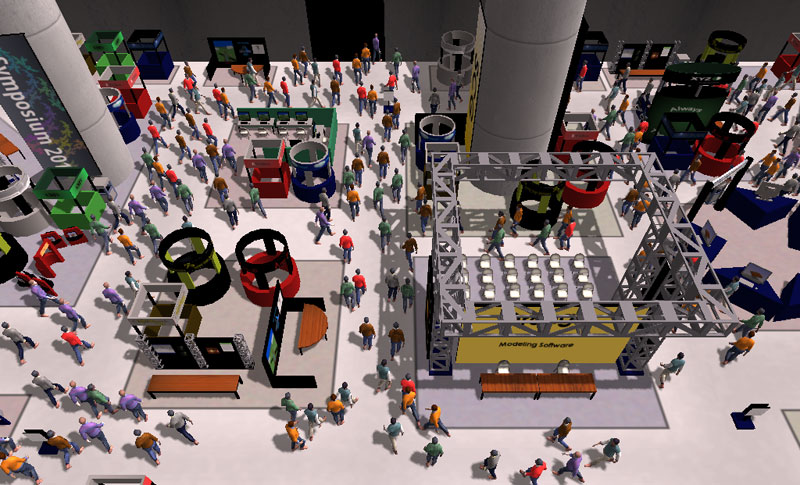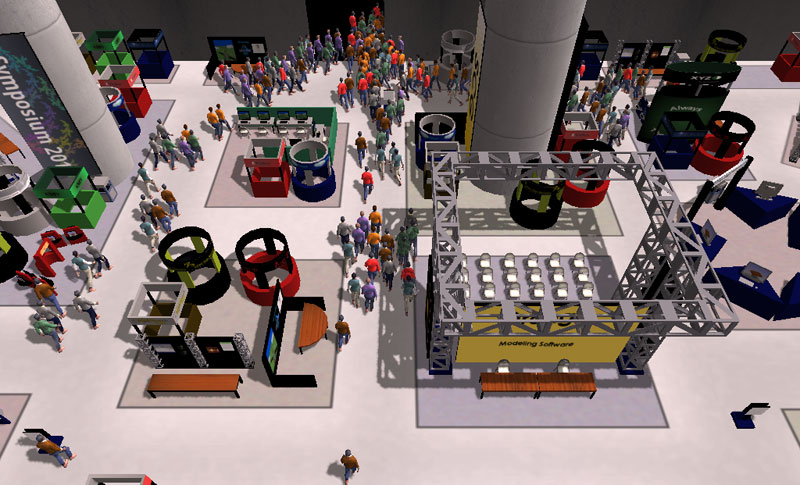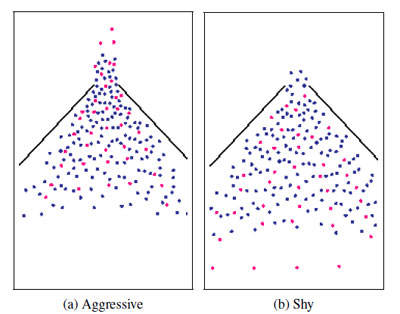Simulating Heterogeneous Crowd Behaviors
Using Personality Trait Theory
Stephen J. Guy, Sujeong Kim, Ming C. Lin and Dinesh Manocha

We present a new technique to generate heterogeneous crowd behaviors using personality trait theory. Our formulation is based on adopting results of a user study to derive a mapping from crowd simulation parameters to the perceived behaviors of agents in computer-generated crowd simulations. We also derive a linear mapping between simulation parameters and personality descriptors corresponding to the well-established Eysenck Three-factor personality model. Furthermore, we propose a novel two-dimensional factorization of perceived personality in crowds based on a statistical analysis of the user study results. Finally, we demonstrate that our mappings and factorizations can be used to generate heterogeneous crowd behaviors in different settings. |
|---|
Downloads
-
Paper [PDF 3.54MB]
-
Video [MOV 57.4MB]
Application to generating heterogeneous crowds


Evacuation Scenario. 200 agents evacuating a building. Shy agents (brown shirts) hold back while aggressive agents (red shirts) dart forward. The other personalities also display a variety of behaviors such as quick maneuvers, overtaking and pushing through.
User Study Scenarios and Results
|
|
Pass-through ScenarioFour highlighted agents move transversely through crowd.
|
 |
|
|---|---|
| Paths of four agents trying to push through a crowd in various simulations. The agents are given parameters corresponding to various personalities. All paths are traveled for an equal length of time. (a) Aggressive agents make the most progress with the straightest paths. (b) Impulsive agents move quickly but take less direct routes. (c) Shy agents are diverted more easily in attempts to avoid others (d) Tense agents take less jittery paths, but are easily deflected by the motion of others. | |
|
Hallway ScenarioFour highlighted individuals move through groups of still agents. |
 |
|
|---|---|
| A comparison between (a) agents with high levels of "Psychoticism", (b) "Extraversion" and (c)"Neuroticism". Each of the four agents’ paths is colored uniquely. The high P-factor agents repeatedly cut close to others taking the most direct paths. The high E-factor agents take faster and occasionally "daring" paths, the high N-factor agents take more indirect paths and keep their distance from others. | |
|
Narrowing Passage ScenarioFour highlighted individuals move through groups of still agents. |
 |
|
|---|---|
| A comparison between dark-blue default agents and light-red Aggressive agents (a) and light-red Shy agents. (b) The Aggressive agents exited more quickly, while several Shy agents stay back from the exit causing less congestion. | |


